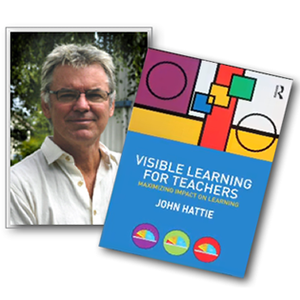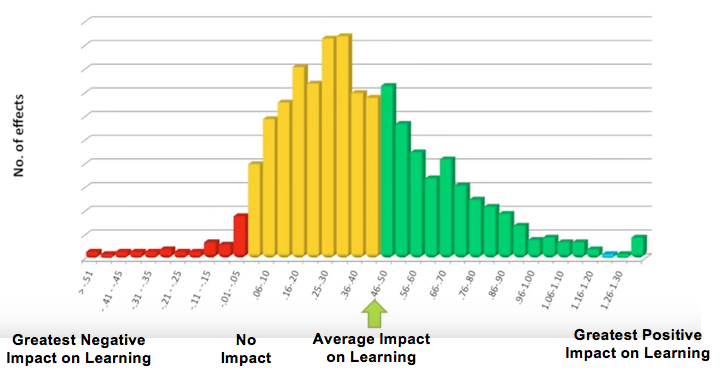 This research brief is a four-part series – Part 1, Part 2, Part 3 and Part 4.
This research brief is a four-part series – Part 1, Part 2, Part 3 and Part 4.
In meetings with school leaders and during PBL 101 workshops, we are often asked: “What does the research say about PBL? Is there hard data to show that it works?” We addressed that question in Setting the Standard for Project Based Learning (Chapter 3). Rest assured that there are plenty of research studies showing that PBL can have more impact on student learning than traditional teaching approaches. But as any teacher knows, there is good PBL and bad PBL. Good PBL inspires and leads to deeper learning. Bad PBL wastes both the teacher’s and the students’ time. What separates good from bad PBL?
There is no single or simple answer to that question, but we believe what the teacher does while conducting a project is crucial. We describe exemplary project based pedagogy using the term, Project Based Teaching, a set of practices combining careful planning, content selection, culture building, classroom management, instruction, assessment, coaching and scaffolding. Said another way, Project Based Teaching brings together the things excellent teachers have always done, but within the context of Project Based Learning. These practices are an essential to good PBL.
In defining Project Based Teaching, we relied on our own teaching experience as well as the experience of the thousands of teachers we work with each year. We also examined project based and problem based research conducted over the last 30 years. In so doing, we came across the work of University of Melbourne professor John Hattie who has been obsessed with understanding what makes a difference in student learning.
 Although not a PBL adherent – actually quite the opposite – Hattie has, for more than 15 years, directed one of the most audacious research projects ever conducted. By studying more than 1000 meta-analyses – a statistical method that combines the results of separate research studies – Hattie has drawn conclusions about the factors that make the most difference in student learning. He bases these conclusions on research that has involved more than 240 million students.
Although not a PBL adherent – actually quite the opposite – Hattie has, for more than 15 years, directed one of the most audacious research projects ever conducted. By studying more than 1000 meta-analyses – a statistical method that combines the results of separate research studies – Hattie has drawn conclusions about the factors that make the most difference in student learning. He bases these conclusions on research that has involved more than 240 million students.
Although ill-informed journalists often trumpet the findings of a single empirical study (“Kale reduces cancer risk!”), many scientists believe a pattern of similar research findings is more compelling than a single study. If multiple research studies conclude the same thing, then the weight of evidence suggests the findings should be taken seriously. Hattie’s work is based upon patterns from multiple research studies showing which factors have the most impact on student achievement.
Hattie writes about his colossal synthesis in three books: Visible Learning, Visible Learning for Teachers, and Visible Learning and the Science of How We Learn. He also talks about his findings (here and here). I would urge educators with a scholarly bent to take a look at Visible Learning for Teachers. You will find that his results both support and challenge your own beliefs, and will probably want to consider how your own teaching incorporates the effective practices Hattie identified.
Hattie’s findings have inspired their share of controversy, and there are some well-respected researchers who distrust the meta-analysis strategy at the heart of his conclusions. I, however, am a supporter of his findings, believing there is much we can learn from them that can improve Project Based Teaching, and further the concept of Gold Standard Project Based Learning. This post will describe what Hattie has done, and review his major conclusion. Later posts will use the concept of Project Based Teaching as a lens to focus his findings, and reflect upon how his own vision of effective teaching works in a PBL classroom.
What did Hattie find out?
Hattie’s first conclusion was that, statistically speaking, nearly everything makes a difference in student achievement. As he puts it: “about 95 percent of all things we do have a positive influence . . . One only needs a pulse and we can improve achievement.” Consider the graph below.

The horizontal axis shows the impact of the factors Hattie considered on student achievement. These include characteristics of students, their homes, their schools, curricula, and teaching practices. Those with negative impacts (decreasing student achievement) appear on the left side of the graph. Those that had a moderate impact on achievement are in the middle of the graph. And those that really made a difference appear on the right. (The vertical axis shows the number of times the impact of each factor has been studied, and is unimportant for our purposes. And for the really wonky readers, the faint numbers appearing under the horizontal axis are effect sizes, a statistical measure of impact.)
Note that most of the graph is colored yellow and green. These are the things that have a positive impact on student achievement. At first that seems like good news. Nearly everything we do has some positive impact on students. But the things that we do have associated costs – in time, money, resources or training. Teachers and schools don’t have unlimited resources. Shouldn’t we emphasize, or at least consider carefully, the things that make the most difference to student learning? On the graph above, they appear in green, to the right of the green arrow labeled Average Impact on Learning. Hattie’s message: Focus on the things that make a greater than average impact on student learning.
In Visible Learning for Teachers, Hattie recounts 67 factors that have a greater than average impact on student achievement. (You can find a similar list on this website.) Although most of the research was conducted in traditional classrooms, many of these factors refer to things that good PBL teachers do – or can do – within a project to have a greater than average impact on student learning. We will dig into these factors in the next post. Right now, let’s conclude by looking at the big takeaways from Hattie’s impressive work.
What does good teaching look like?
First, since it’s apparent that most of the things teachers do have a positive impact on student learning, good teaching is not merely to know how to use specific instructional techniques, but when to use what approach, and to mix and match in service of student learning. Hattie writes that good teaching “combines, rather than contrasts, teacher-centered teaching and student-centered learning and knowing.”
Projects provide fertile opportunities to do this, pulling together disparate instructional practices – cooperative learning, didactic instruction, peer tutoring, the meta-cognitive strategies of student planning and self-monitoring, woven together with regular formative evaluation and feedback. I like to think of a project as an envelope, in which the teacher – and often teacher and students – combines needed instruction, resources, evaluation, and feedback, organized by a driving question with ample opportunities for student voice and choice.
Second, good teachers are “activators” deeply engaged with their students, rather than mere “facilitators” of learning. For too long, constructivist-leaning educators have romanticized the potential of independent student learning, using the inappropriate metaphor of “inquiry-based” or “discovery” learning. Good teachers – at least in K-12 schooling – have never been limpid guides or stage-bound sages. Instead, they are activators, bringing about changes in their students. This is at the heart of Project Based Teaching. Hattie writes:
"The aim is to get the students actively involved . . . their role is not simply to do tasks as decided by teachers, but to actively manage and understand [their] . . . learning gains. This includes evaluating their own progress, being more responsible for their learning, and being involved with peers in learning together . . . "
Good teaching is interactive. The teacher is planning, managing, and instructing, making choices about when students can carry on without assistance, and when they need resources or content conversations or clarification of project goals. Good teachers and their students have complementary roles. For Hattie, the teacher’s mantra is: "I see learning through the eyes of my students; I help students to become their own teachers." This too is an apt description of Project Based Teaching. It is a process of recognizing individual student’s progress toward key knowledge, understanding and success skills, then providing enough scaffolding until students can kick away the scaffolds, continue to learn on their own, and monitor their learning progress.
Finally, Hattie believes strongly that at the core of good teaching is an insistent and continuing focus on the actual impact teachers are having on students:
"'My role, as a teacher is to evaluate the effect I have on my students.’ It is to ‘know thy impact’, it is to understand this impact, and it is to act on this knowing and understanding. This requires that teachers gather defensible and dependable evidence . . ."
One important source of information about a teacher’s impact is the quality of work students create, as well as test scores and student reflections. Hattie recommends that teachers “hold collaborative discussions with colleagues and students” around learning evidence. There is no teaching method that inevitably works – not even PBL! Good teaching is energetically adjusting classroom practices, project dimensions, and creating new scaffolds and resources for different students. There are many things that a teacher can do to make a difference, many different ways to approach content learning, further student understanding, and develop success skills. Good teachers become better teachers through observation and analysis of their own impact.
Hattie’s conclusions about the importance of students developing the tools necessary to take charge of their own learning, and teachers adjusting and changing instruction and projects according to the accomplishments and challenges of their students, accords well with BIE’s vision of gold standard Project Based Teaching. His work also identifies specific teaching practices that make a greater than average difference in student learning. We’ll take a look at some of those practices in the context of Project Based Teaching in the next post.
This research brief is a four-part series. Read more in Part 2, Part 3, and Part 4.

